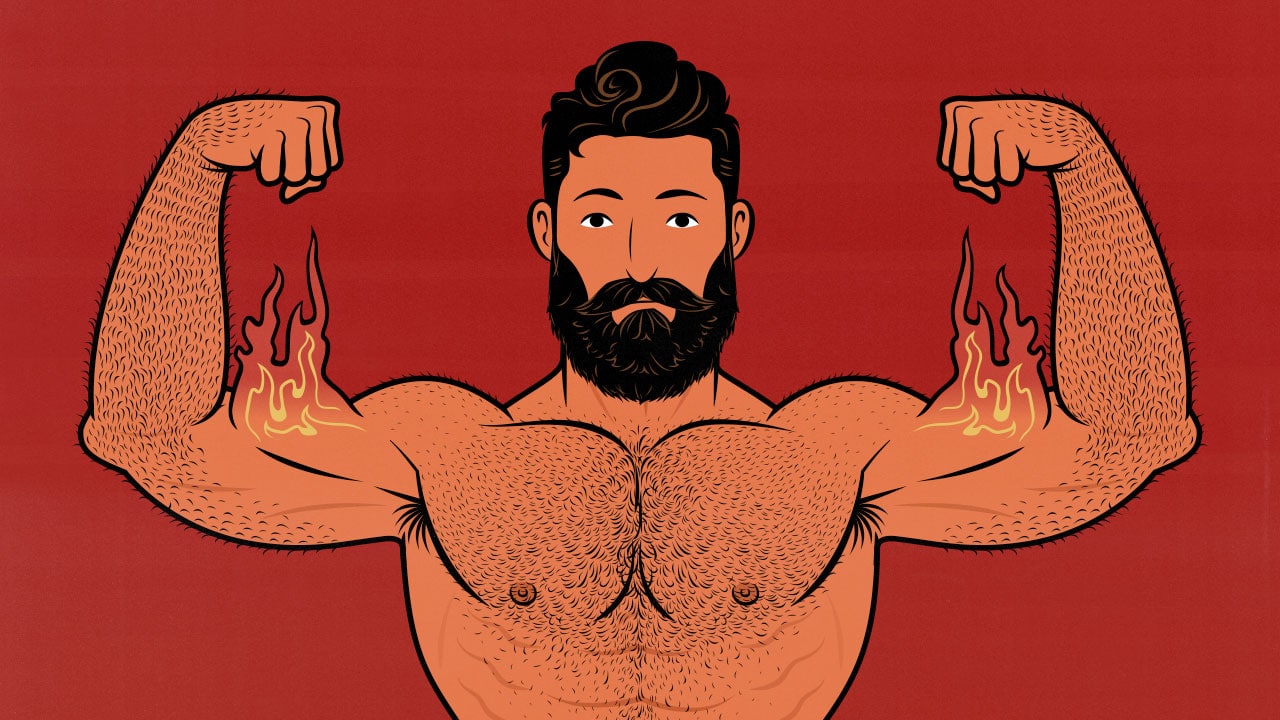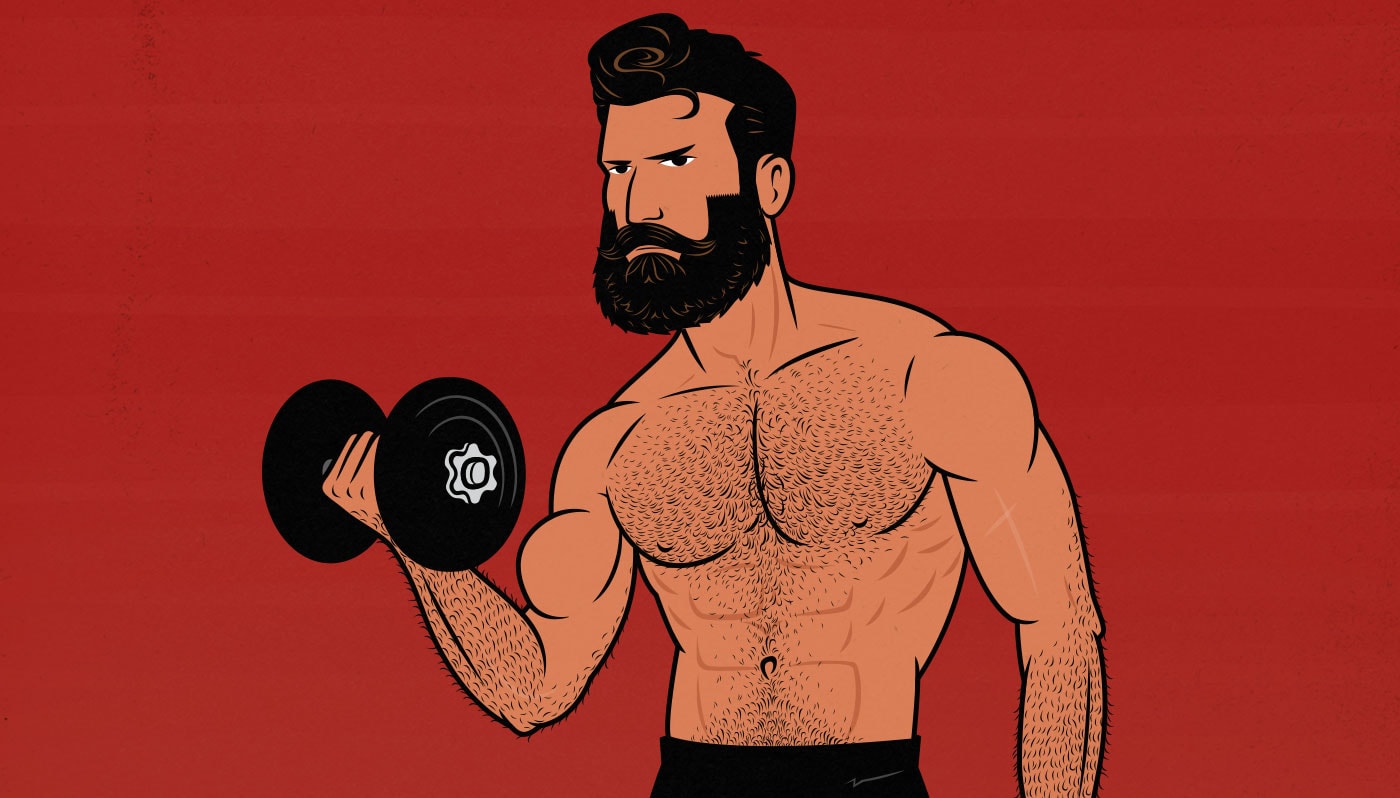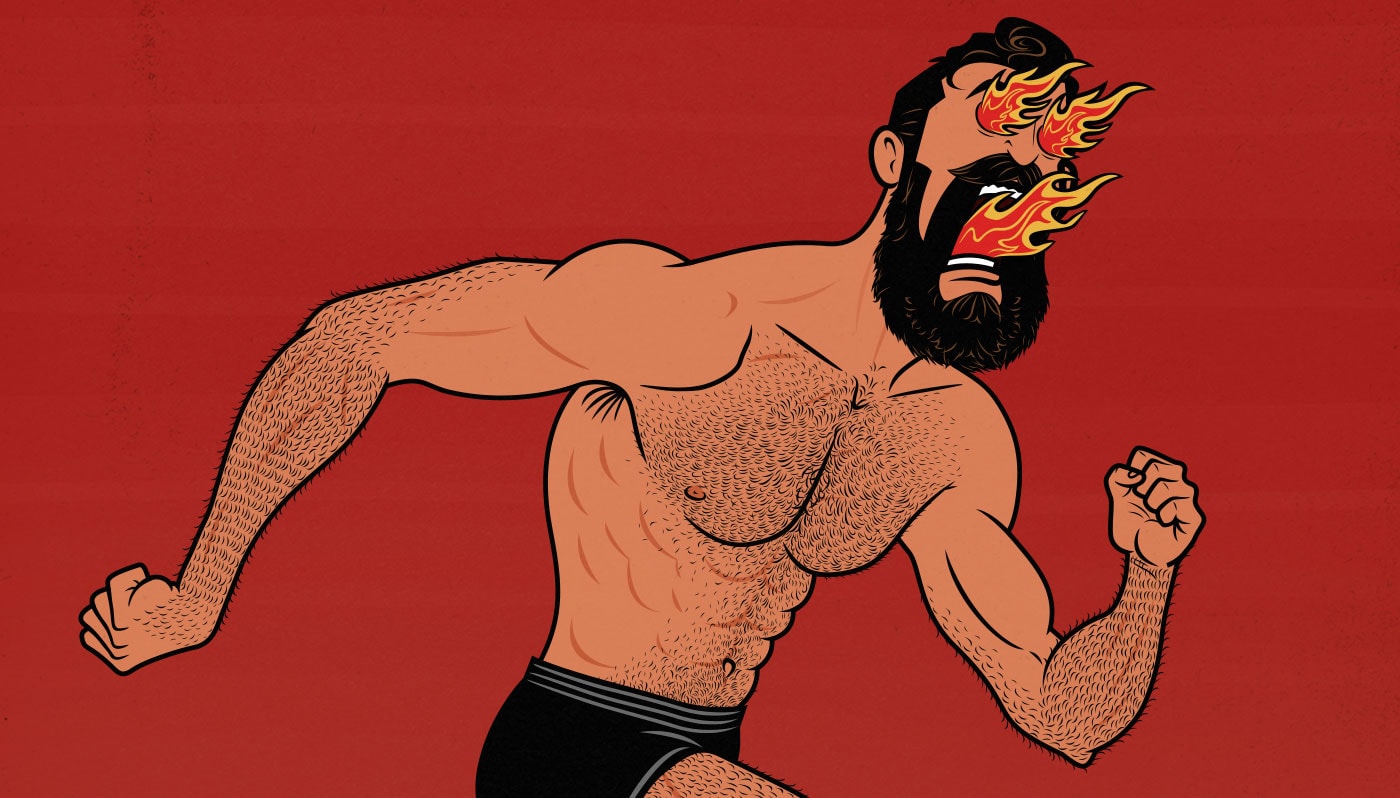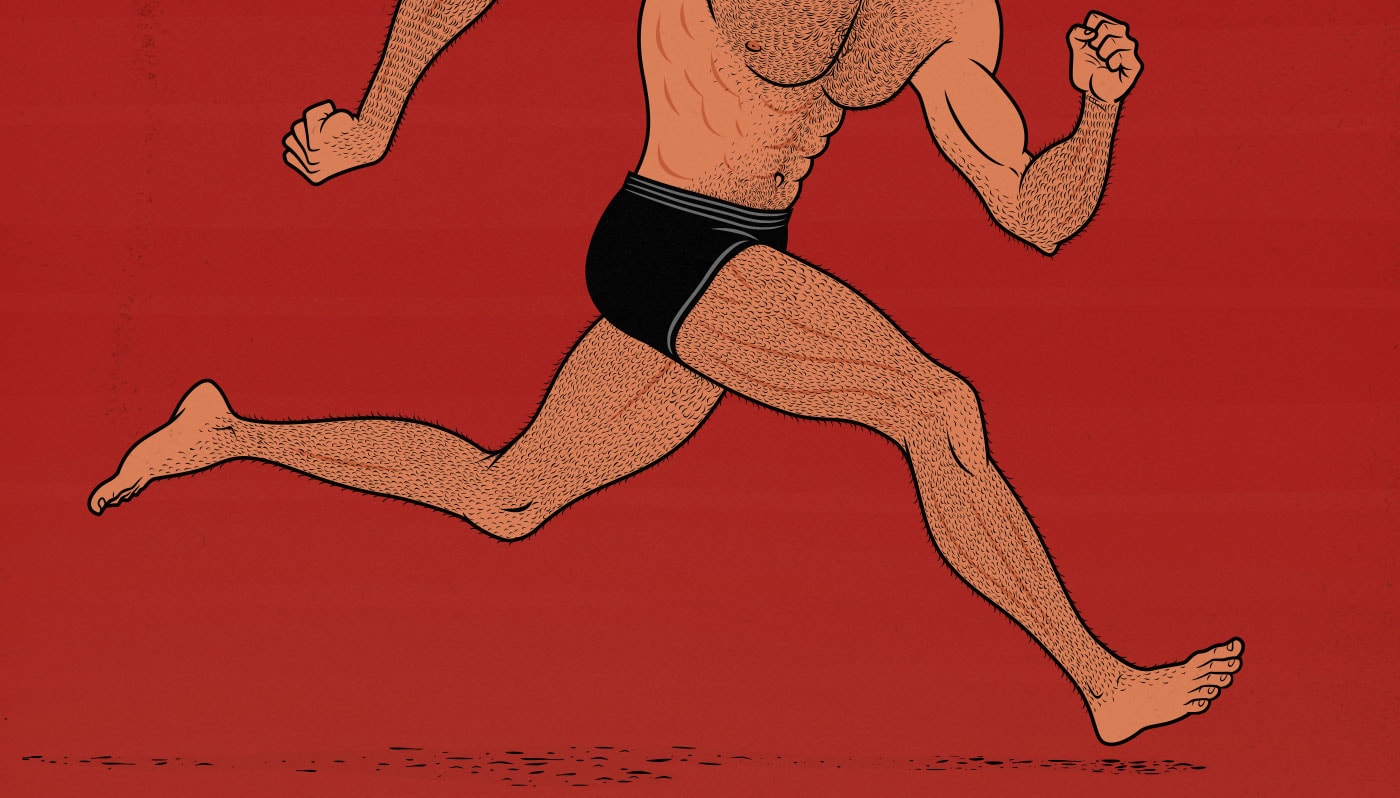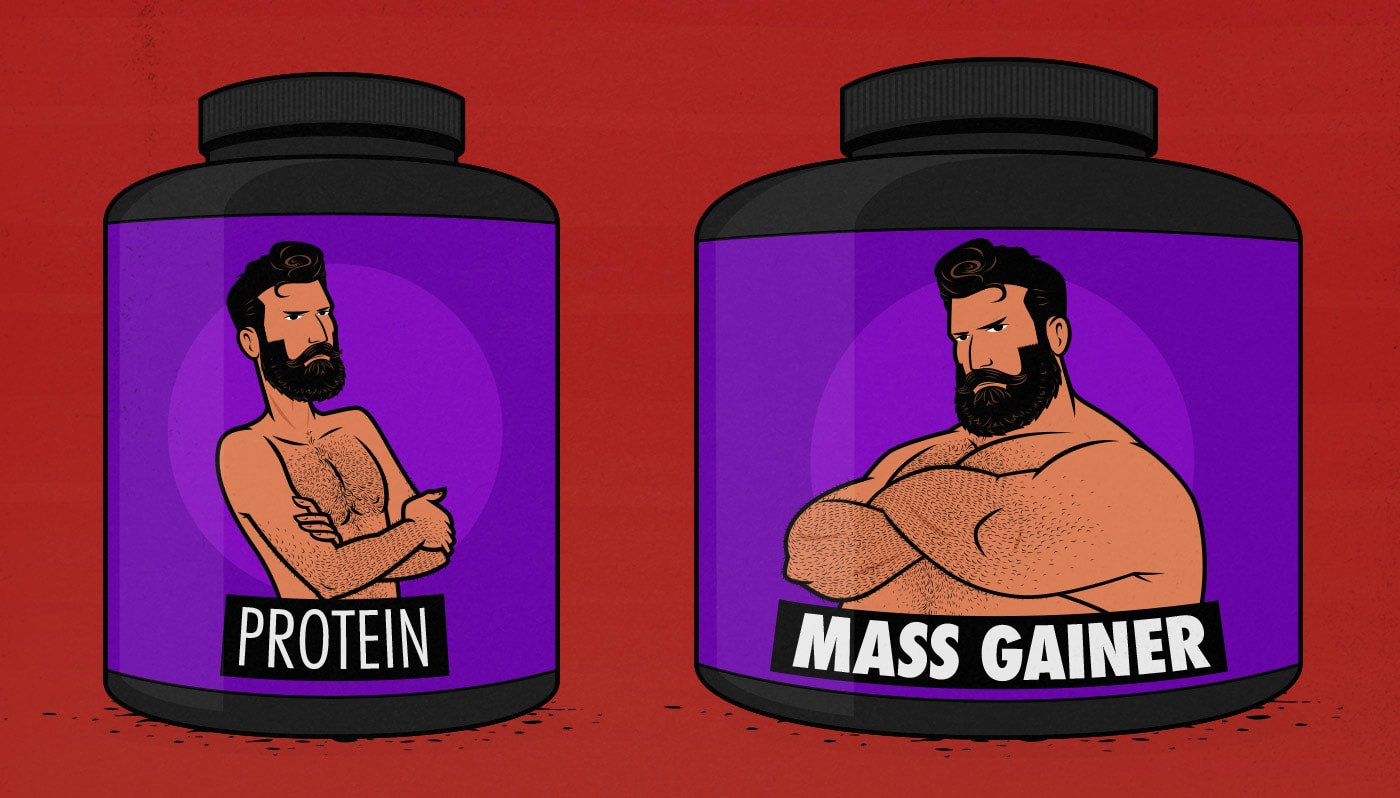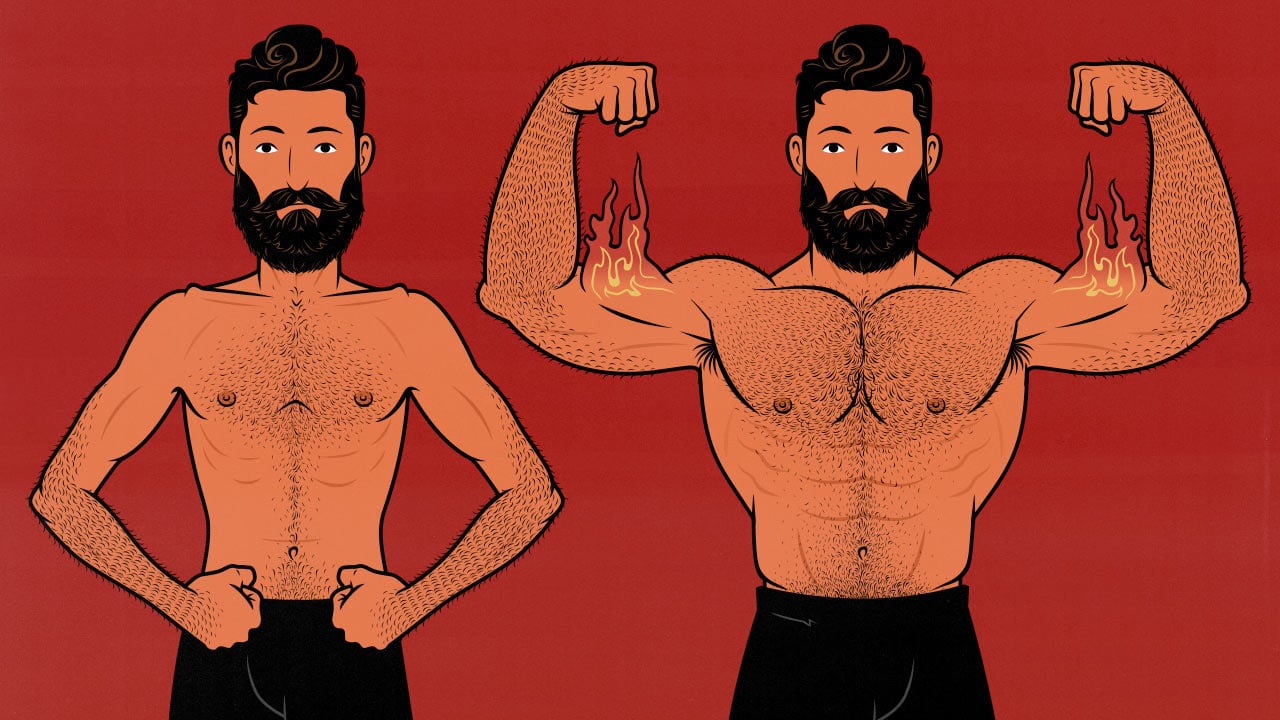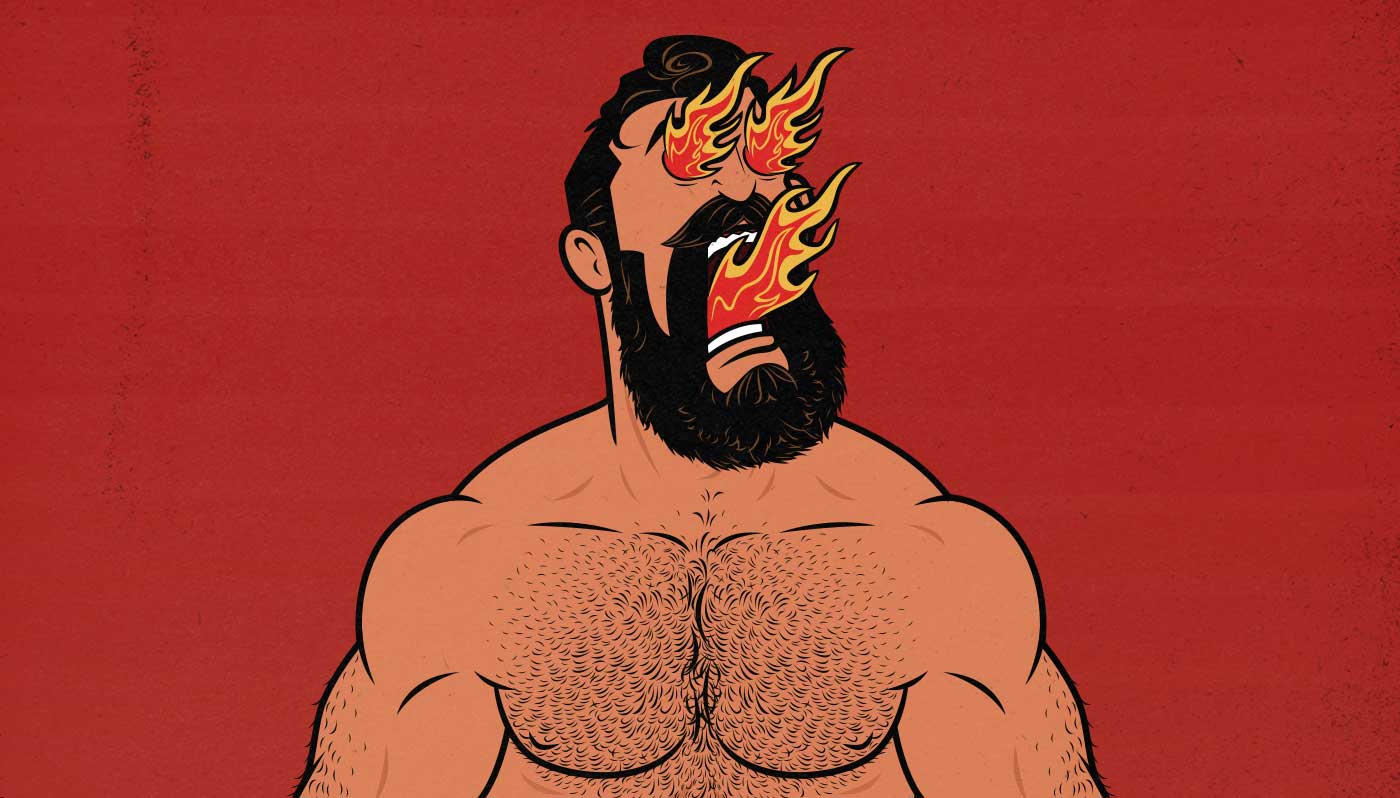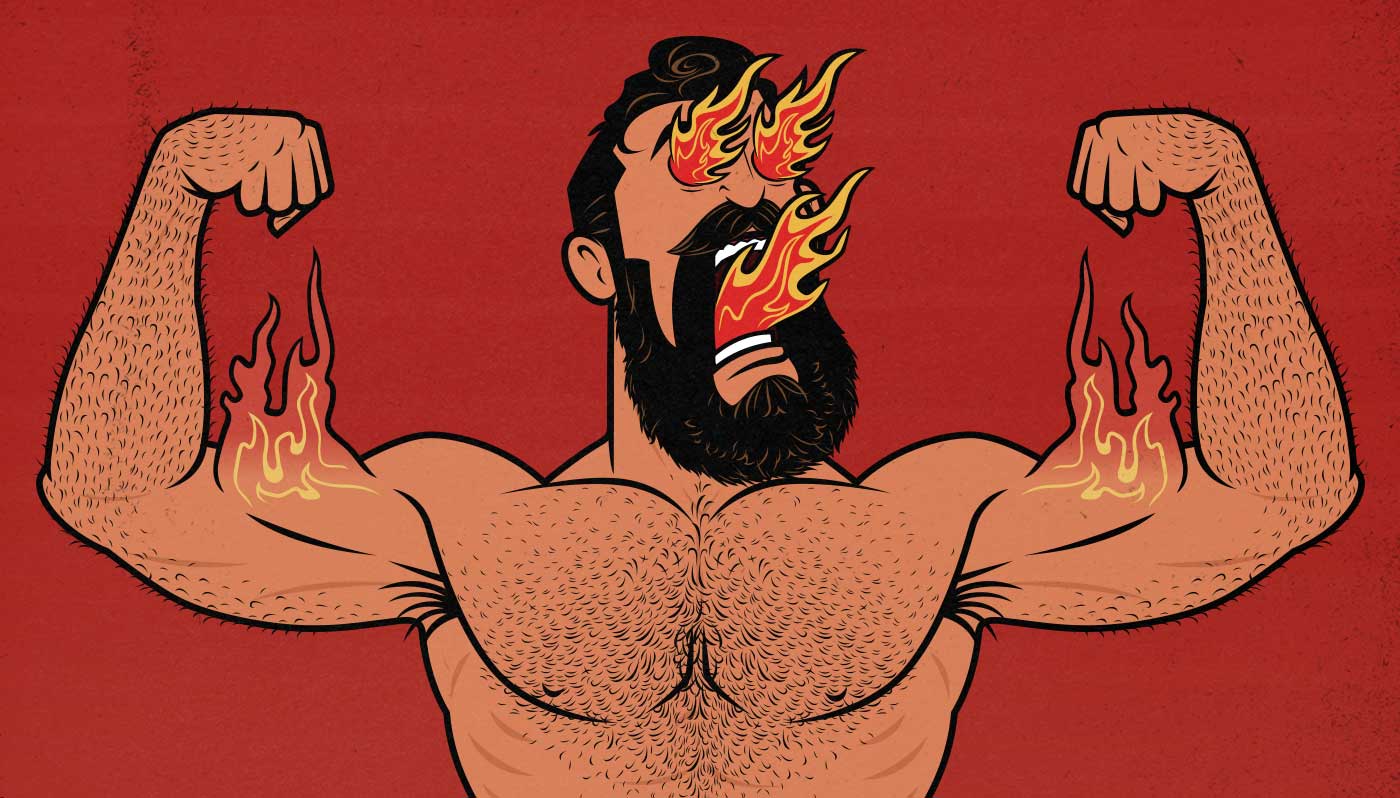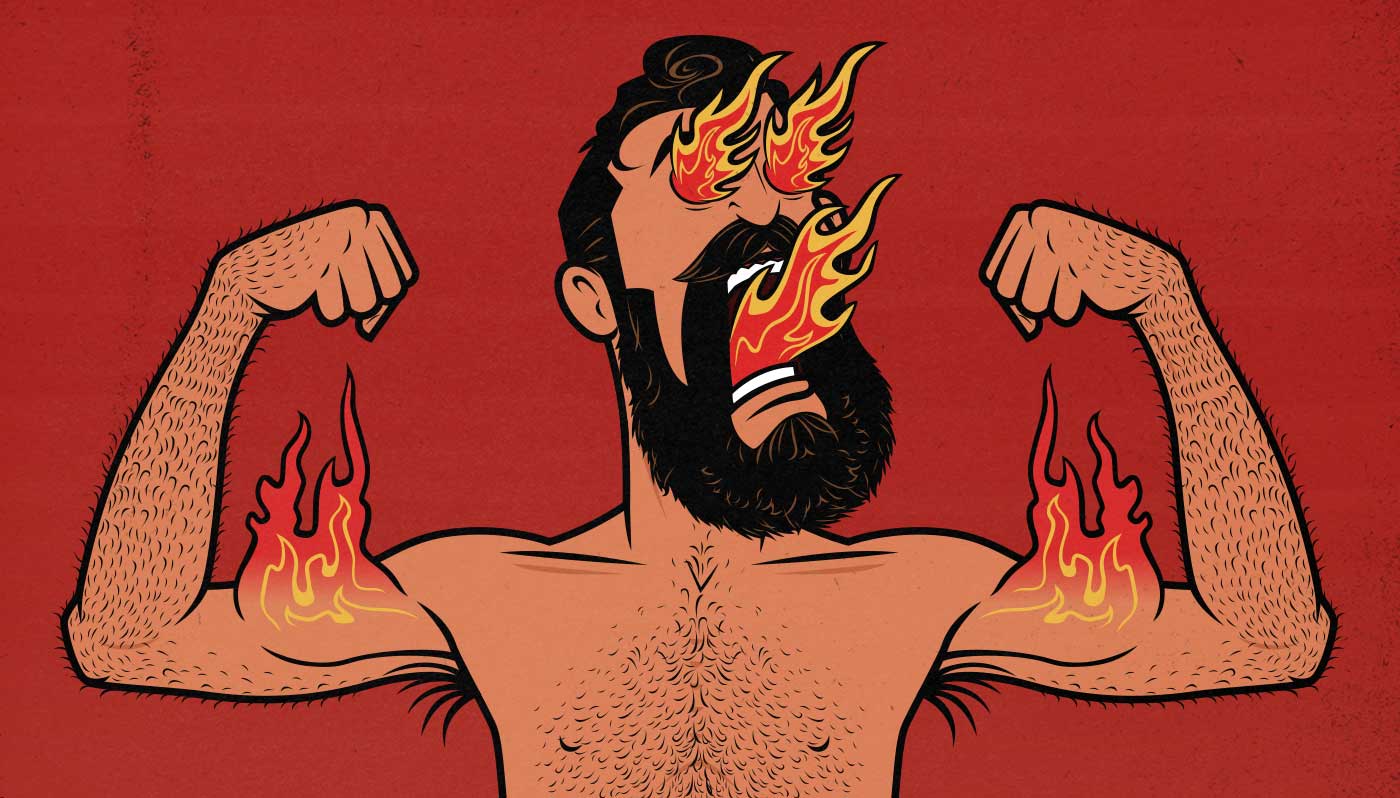Articles
How Many Calories Does a Pound of Muscle Burn?
A pound of muscle burns around 6 calories per day at rest (study, study, study, study). However, it also takes energy to carry around and use those muscles. Your heftier leg muscles need to haul your beefier upper body around. This can double or even triple the calories your muscles burn.
All told, a pound of muscle burns more like 8–16 calories per day. I’ve given a full explanation below. I’ve also made a simple calculator.
Perhaps more importantly, I want to talk about the implications of burning those extra calories. Usually, burning more calories is a good thing. You get to eat more food, which means you get to eat more nutrients—more energy, but also more fibre, probiotics, and micronutrients.
However, many naturally thin people worry that to maintain the muscle they gain, they’ll be forced to eat an uncomfortable amount of food forever. I had that same worry.
To my horror, my worst nightmare came true. I gained nearly 60 pounds of lean mass, and my calorie needs went up by over 700 calories per day. To my great relief, it wasn’t anything like I expected.
Delve into the detailsWhat Happens If You Spread Your Workout Throughout the Day?
What if, instead of doing your workout all at once, you spread your sets or exercises over the day? Maybe that means doing your squats before work, your push-ups before lunch, and your chin-ups before dinner. Or maybe you spread your five sets of chin-ups throughout the day, resting a few hours between each set.
There are many different ways you could split up your workout. How will that affect muscle growth, muscle recovery, fat loss, and your health?
Delve into the detailsDoes a Calorie Surplus Help With Cardio?
You need an abundance of energy to build muscle. You use that energy to convert protein into muscle mass. You can get that energy by eating more food or by burning body fat (if you have an abundance of body fat).
It’s less clear whether you need extra calories to make cardiorespiratory adaptations. Will eating in a calorie surplus help you construct more blood vessels, gain new mitochondria, carry more oxygen in your blood, and build a bigger left ventricular wall in your heart?
Let’s dive into it.
Delve into the detailsConcurrent Training: How to Schedule Cardio & Weight Training
In this article, we’ll teach you how to improve your cardiovascular fitness while building muscle and getting stronger. We want the health benefits of doing cardio, but we aren’t trying to lose weight. We’re trying to build muscle. That changes things.
- You need to schedule your cardio and muscle-building workouts. That means you’ll need to schedule your cardio somewhat carefully. Otherwise, the so-called “interference effect” can interfere with the muscle-building adaptations you get from lifting weights. Some people downplay this effect, but the latest research shows it can cut your rate of muscle growth in half (study).
- Lifting weights improves cardiovascular fitness. Lifting isn’t ideal for improving cardiovascular fitness, but it’s not too bad. If you lift weights, you’re probably in significantly better shape than the average person.
- If you’re trying to build muscle, you’ll have different questions about cardio. What type of cardio should you do while bulking? Will doing cardio help you build muscle more leanly? Can weight training count as cardio? How can you maximize cardiovascular and muscle-building adaptations at the same time?
Will Mass Gainers Make You Fat?
Mass gainers are near and dear to my heart. They’re the only supplement on the entire supplement market that’s designed specifically for skinny people who are trying to gain weight. For a naturally skinny dude like me, sick of drowning in an ocean of fat-loss supplements I couldn’t care less about, that was a big deal.
I find the marketing for mass gainers appealing, too. Instead of needing to force down an extra meal, all we have to do is drink this high-calorie, high-carb, high-protein shake that’s specifically designed to help us pack on muscle quickly and leanly. No cooking, no cleaning, no chewing, and no eating. That’s pretty tempting!
On the other hand, mass gainers are packed full of cheap, highly processed carbs. It’s like cake mix with a scoop of protein powder tossed in. It’s processed food. Won’t that make us fat?
Let’s dive into it.
Delve into the detailsHow to Build Muscle—Full Guide
To build muscle, you need to do 3 things: challenge your muscles enough to stimulate growth, eat enough food to fuel that growth, and then recover.
We’ve helped over 10,000 people bulk up over the past 10 years, ranging from everyday people all the way up to college, professional, and Olympic athletes. This is what we live and breathe, all day, every day. It works every time, guaranteed.
But there’s nuance here. Some types of resistance training are better for stimulating muscle growth than others. Some types of food can help you make faster, leaner gains. And you don’t want to eat so much that you get fat.
So, how should you train, eat, and rest to build muscle?
Delve into the detailsHow Long Do You Build Muscle After Working Out?
When you lift weights, you stimulate muscle growth. How long after your workout does that stimulus last? And how long does it take for your muscles and tendons to recover? If you can balance those two factors, you’ll know how often to train each muscle.
This is especially important if you’re bulking. You need to make sure your body is primed for muscle growth before you shovel down all those extra calories.
Delve into the detailsHow to Do Giant Sets
Giant sets are one of the best methods for gaining both muscle size and strength. They aren’t better than straight sets or supersets, but they are more efficient, allowing you to stimulate more muscle growth in a given amount of time.
Giant sets are also great for your overall health and conditioning. Because you aren’t resting very long between each set, your cardiovascular system is getting a hearty workout, too. And because each individual muscle is still getting plenty of rest before being worked again, giant sets are still great for gaining muscle size and strength.
So, what are giant sets? And what’s the best way to program them?
Delve into the detailsHow to Gain Weight With A Fast Metabolism
Skinny people often have a few traits dragging their weight down: thin bones, narrow frames, small stomachs, meagre appetites, and fast metabolisms. In this article, we’ll focus on that very last piece of the puzzle: how to gain weight with a raging metabolism. This is something we know all too well. I’ve lived it. So have Marco and Cassandra. And so have the 10,000 clients we’ve coached through it.
It’s not quite as simple as people often assume, though. Your trouble gaining weight probably has less to do with having a “fast” metabolism and more to do with having an “adaptive” metabolism. As in, the more food you eat, the more your metabolism revs up, and the more calories you burn. This is what the term “hardgainer” refers to. I think it’s also why some skinny people are dubbed “non-responders” when they first start lifting weights.
So, how can you gain muscle, strength, and weight with a fast metabolism? Let’s dive in.
Delve into the detailsWhat’s Progressive Overload & How Should You Do It?
Progressive overload is one of the foundational principles of both strength training and hypertrophy training. When you lift a challenging amount of weight, you provoke muscle growth, making your muscles stronger. To continue challenging your growing muscles, you’ll need to lift gradually heavier weights.
- To get stronger, lift more weight.
- To lift more weight, get stronger.
It’s one of those chicken-and-egg riddles, but both chicken and eggs are good for building muscle, so that’s perfectly fine. Speaking of which, you also need to progressively overload your calories to continue building muscle.
In this article, we’ll teach you how to use progressive overload to stimulate muscle growth with your workouts and fuel muscle growth with your diet.
Delve into the details
